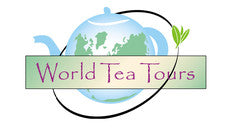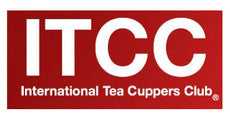For this Cupping Event, several gardens in Darjeeling generously agreed to produce special samples which were intentionally manipulated during processing to highlight specific “defects.” While common in many teas to a small degree, these usually undesirable attributes can be difficult for most tea drinkers to recognize clearly. Even more so is to understand why a tea tastes the way it does. Professional tea tasters also understand the process of tea making and over time, learn to recognize the effects of each step on the appearance, aroma, shape and taste of the tea.
From the moment the leaf is plucked, it begins a series of chemical changes. In essence, the leaf begins to decompose. Left alone the leaf will slowly dehydrate, enzymes will oxidize, molecular structures will change and the leaf will return to the elements out of which it grew.
The process of tea making carefully and intentionally manipulates these stages to produce a specific result. Fundamentally, once picked, the leaves are brought to the factory for withering. In the case of black tea, the leaves are then rolled. Next they are exposed to the ambient air and allowed to oxidize. Lastly they are fired. The withering allows moisture to evaporate from the leaves. Rolling breaks the cell walls and brings the internal juices to the surface. In oxidation, the compounds in the leaves react and change. Firing/Baking stops the oxidation and removes the remaining moisture. There are other purposes and effects of the different steps and some steps may be repeated or additional steps (like breaking) may be undertaken to create the desired outcome. Timings, temperatures and techniques can be adjusted to compensate for variables like season, internal leaf moisture, ambient air temperature and humidity, time of day, etc.
 It is very much an art to manipulate all these variables and achieve the desired goal: a perfectly made tea. If any of the steps are improperly done, the outcome can be far from
It is very much an art to manipulate all these variables and achieve the desired goal: a perfectly made tea. If any of the steps are improperly done, the outcome can be far from the tea maker’s mark. What if leaves of different size and quality are plucked and mixed together? What if they are withered either too much or not enough? What if the rolling is excessive or insufficient? What if the leaf gets under or over oxidized? What if the firing is too long or short and the temperature is too cool or hot? What if the finished tea is not sorted well and leaves of different sizes (which will infuse differently) are mixed together. All these things shape the final product and either make it an exceptional sensory experience or ruin it.
the tea maker’s mark. What if leaves of different size and quality are plucked and mixed together? What if they are withered either too much or not enough? What if the rolling is excessive or insufficient? What if the leaf gets under or over oxidized? What if the firing is too long or short and the temperature is too cool or hot? What if the finished tea is not sorted well and leaves of different sizes (which will infuse differently) are mixed together. All these things shape the final product and either make it an exceptional sensory experience or ruin it.
The ITCC Cupping Event paired properly made teas and “manipulated” teas from the same gardens. Cuppers were not only able to become more familiar with the uniquenesses of each garden, but could also have – more or less – a baseline with which to compare the defective samples. There were five pairs; the defects investigated were: insufficient rolling, causes of excessive astringency, over-firing, excessive oxidation and over-withering. Cuppers followed the prescribed infusion method using professional tea cupping equipment and then recorded their impressions for all to see on the ITCC website. Other variables such as water pH and source were recorded. One Cupper made the most of the winter season and used snow as the water source.
Through events and exercises like this and others, tea lovers of all levels can gain a deeper understanding of teas from around the world and also develop a more profound appreciation for the skill and craft of the tea maker. The next ITCC Cupping Event will investigate the intriguing and sometimes mysterious Pu Er teas from China. Registration is open to all members. Or, call: 630 961-0877







